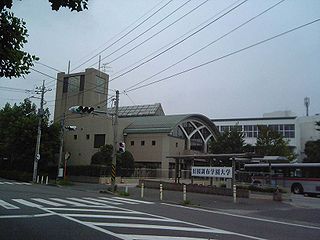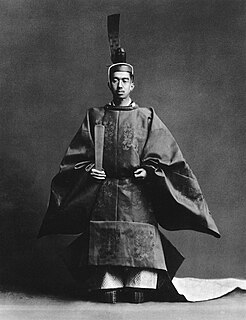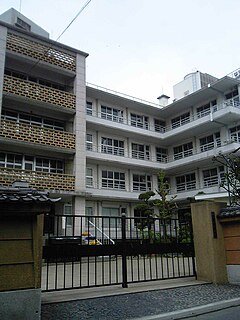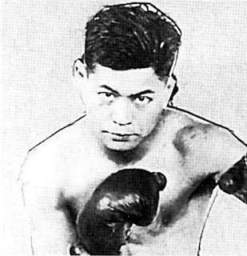 W
WArai Helmet Limited is a Japanese company that designs and manufactures motorcycle helmets and other helmets for motorsports.
 W
WChitose Air Base , is a Japan Air Self-Defense Force base located in Chitose, Hokkaidō, adjacent to New Chitose Airport. It is the JASDF's primary base in northern Japan and tasked with monitoring Japan's maritime borders with Russia. It was also Hokkaidō's primary civilian airport until the opening of New Chitose Airport in 1988. Together, these two jointly operated and connected airports create one of the largest regional airports in Japan.
 W
WDen-en Chōfu University is a private university in Kawasaki, Kanagawa, Japan. Its predecessor, a women's school, was founded in 1926. It was chartered as a women's junior college in 1967 and became coeducational in 1998. In 2002 the school became a four-year college.
 W
WThe Hachioji Academy (八王子学園) is a preparatory private secondary school located in Hachioji, Tokyo, Tokyo, Japan. Also known as Hachioji Gakuen Hachioji Junior and Senior Highschool.
 W
WIseki & Co., Ltd. , based in Matsuyama and Tokyo, Japan, is the third largest Japanese agricultural machinery manufacturing company. Its products include tractors, combine harvesters, rice transplanters, riding mowers, zero-turn mowers, tillers, components, and diesel engines.
 W
WThe Japan Labour Union League was a trade union centre in Japan. It was founded in December 1926, following the split in the Social Democratic Party as the leaders of the dissident Japan Labour-Farmer Party were expelled from the social-democratic Japan Federation of Labour (Sodomei) trade union centre. The Japan Labour Union League functioned as the trade union wing of the Japan Labour-Farmer Party, and had around 5,000-6,000 members.
 W
WThe Japan Labour-Farmer Party was a socialist political party in Japan between December 1926 and December 1928. During its existence, it occupied a centrist position in the divided socialist movement.
 W
WThe Japan PGA Championship is a professional golf tournament on the Japan Golf Tour, and is one of the tour's four major championships. It was founded in 1926, making it one of the oldest professional tournaments in Japan, and is played at a variety of courses throughout the country. The purse for the 2017 event was ¥150,000,000, with ¥30,000,000 going to the winner.
 W
WThe Kansai Open Golf Championship is a professional golf tournament held in the Kansai region of Japan. Founded in 1926, one year before the Japan Open Golf Championship, it was the first professional tournament to be organised in Japan. It was an event on the Japan Golf Tour from 1973 to 1991 and has been back on the tour schedule since 2009. The 2019 event was the 85th edition.
 W
WThe Iwashimizu-Hachimangū Cable , officially the Keihan Cable Line , is a Japanese funicular line in Yawata, Kyoto, operated by Keihan Electric Railway. The line opened in 1926 as a route to Iwashimizu Shrine. Riders in January, the season of hatsumōde, account for 50% of the whole year ridership.
 W
WKobe Electric Railway Co., Ltd. , often called Shintetsu (神鉄), is a Japanese private railway company in Kobe and surrounding cities.
 W
WThe Kunitachi College of Music is a private music conservatory in Tachikawa, Tokyo, Japan. Founded in 1926 as the Tokyo Conservatory of Music, Kunitachi now offers study programs in performance, music education, composition, computer music, and musicology, for bachelor's degree, post-bachelor's diploma, master's degree, and doctorate. It has signed cooperation agreements with notable music schools around the world, such as Geneva University of Music, California Institute of Arts, among others.
 W
WThe Labour-Farmer Party was a political party in the Empire of Japan. It represented the left-wing sector of the legal proletarian movement at the time. Oyama Ikuo was the chairman of the party. At the time the party was banned by the government in 1928, it was estimated to have around 90,000 members in 131 local organizations. The party was supported by the Hyōgikai trade union federation and the Japan Peasant Union.
 W
WMeiji Memorial Picture Gallery is a gallery commemorating the "imperial virtues" of Japan's Meiji Emperor, installed on his funeral site in the Gaien or outer precinct of Meiji Shrine in Tōkyō. The gallery is one of the earliest museum buildings in Japan and itself an Important Cultural Property.
 W
WMeijo University is a private university in Japan. Its main campus is in Tempaku-ku, Nagoya, Aichi Prefecture, and it has two other campuses in Nagoya, Aichi Prefecture. It had two faculty members who were Nobel laureates as of 2021.
 W
WThe Nagoya Port Drawbridge is a drawbridge in Nagoya Port in Nagoya, Japan.
 W
WThe NHK Symphony Orchestra, Tokyo is a Japanese broadcast orchestra based in Tokyo. The orchestra gives concerts in several venues, including the NHK Hall, Suntory Hall, and the Tokyo Opera City Concert Hall.
 W
WThe Shōwa era refers to the period of Japanese history corresponding to the reign of Emperor Shōwa (Hirohito) from December 25, 1926 until his death on January 7, 1989. It was preceded by the Taishō period. The pre-1945 and post-war Shōwa periods are almost-completely different states: the pre-1945 Shōwa era (1926–1945) concerns the Empire of Japan, and post-1945 Shōwa era (1945–1989) is the State of Japan.
 W
WSugino Fashion College is a private college headquartered in Shinagawa, Tokyo, Japan.
 W
WTaisho University is a private university in Nishi-sugamo, Toshima, Tokyo, Japan. The predecessor of the school was founded in 1885, and it was chartered as a university in 1926.
 W
WTeiken Boxing Gym (帝拳ボクシングジム) in Tokyo, a Japan's traditional boxing club whose genesis dates back to 1926, manages professional boxers as a member of the East Japan Boxing Association , a subsidiary body of Japan Pro Boxing Association . Currently located in Kagurazaka, Shinjuku, its president is the International Boxing Hall of Famer Akihiko Honda , the representative is Tsuyoshi Hamada , and the long-time female manager is Haru Nagano . In order to distinguish from three related clubs i.e. Osaka Teiken Boxing Gym, Fukuoka Teiken Boxing Gym and Hachinohe Teiken Boxing Gym, it is often referred to as "Teiken (Boxing) Gym in Tokyo" or "Tokyo's Teiken (Boxing) Gym".
 W
WTenri Central Library is the library of Tenri University. It has notably extensive collections in antiquarian material, including original manuscripts from 13th-century Japan, and artifacts of European exploration and early visits to Japan. Dating to 1926, the library predates the university itself. It has its origins in the private collection of the family of the foundress of Tenrikyo, Oyasama.
 W
WThe Tokyu Toyoko Line is a major railway line connecting Tokyo (Shibuya) to Yokohama. The line is owned and operated by the private railway operator Tokyu Corporation. The name of the line, Tōyoko (東横), is a combination of the first characters of Tōkyō (東京) and Yokohama (横浜). The Toyoko Line is the mainline of the Tokyu network. The section between Den-en-chōfu and Hiyoshi Station is a quadruple track corridor with the Tōkyū Meguro Line.
 W
WToray Industries, Inc. is a multinational corporation headquartered in Japan that specializes in industrial products centered on technologies in organic synthetic chemistry, polymer chemistry, and biochemistry.
 W
WToyo Gakuen University , also known by the acronym TGU, founded in 1926, is a small private college located in the greater Tokyo area of Japan. The university has two campuses. The original campus, which presently houses the School of Business Administration, is located in downtown Tokyo, in Hongō, Bunkyō Ward. The school also has a larger campus in the city of Nagareyama, in Chiba Prefecture, about an hour away from the main campus by train. The Nagareyama campus is the home for TGU's Faculty of Humanities.
 W
WTsurukawa Women's Junior College is a private junior college in Machida, Tokyo, Japan. The precursor of the school was founded in 1926, and it was chartered as a university in 1968.
 W
WThe Yūrinkan Museum (有鄰館) or Fujii Saiseikai Yūrinkan (藤井斉成会有鄰館) is a private museum of East Asian art in Kyōto, Japan. Established in 1926 by entrepreneur and politician Fujii Zensuke (1860–1934), it is the second oldest private museum in Japan, after the Ōkura Shūkokan. The collection, particularly strong in Chinese art from the Shang to the Qing, includes one National Treasure and nine Important Cultural Properties.